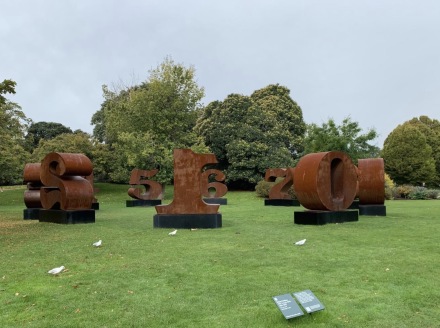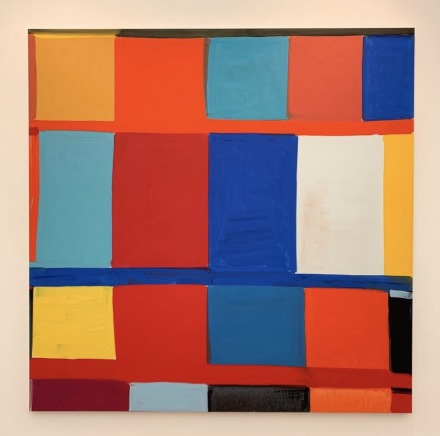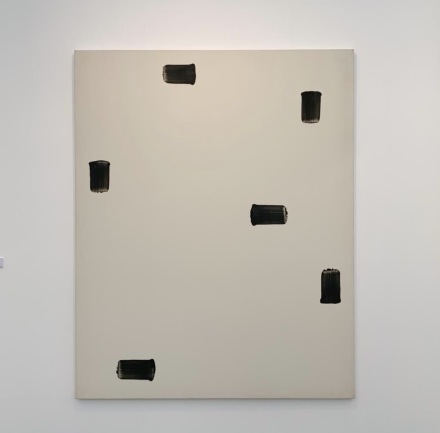After a whirlwind few hours in London, the Frieze Art Fair is underway, and the doors are open for the public. Opening its doors this week for its 17th edition in Regent’s Park, Frieze London has once again turned the art world’s collective eye towards the British capital for the next week, as sales and installations across its spacious halls make for a fitting center to one of the city’s busiest art events.

Robert Indiana, via Art Observed
Known for its impressive offerings and expansive layout, this year’s fair seems to be opening on an uncertain time, with a Brexit decision pending and international politics at a tense juncture. Yet that didn’t stop the visitors from coming. Ellie Goulding, Claudia Schiffer and Tracey Emin could all be seen wandering the fair in the early hours, as dealers and gallerists stopped off at each others’ booths for a quick hello.

Georg Baselitz, via Art Observed
At the Gagosian booth, one could view a range of works including new pieces by Sterling Ruby, including one of his Basin Theology works and a selection of new paintings, while over at Marianne Boesky, one could browse a range of pieces by the Haas Brothers, among them a series of sculptures of small creature-like bodies, and large-scale ceramic works. Also presenting a strong booth was Gavin Brown’s Enterprise, where a floor by Martin Creed and new paintings by Alex Katz and Arthur Jafa emphasized the gallery’s always strong sense of programming. At the younger gallery The Sunday Painter, a striking piece by Nicholas Pope was on view, a towering piece of ceramics titled Yahweh and the Seraphim (1995) that emphasized a series of architectural elements created for a non-denominational chapel.
While strong works seemed to be in abundance, sales seemed relatively sluggish by comparison, a note that seemed to echo the challenges faced by galleries and the British economy at large in the run-up to the Brexit decision few seem able to predict or properly prepare for. While galleries like Hauser & Wirth could lean on museum quality works, selling a Cy Twombly oil-and-chalk work on paper for $6.5 million and a Philip Guston for $5 million, or Victoria Miro, which sold a wall-size Sarah Sze for $200,000, other museums seemed to struggle.
Thaddaeus Ropac was not one of them however, notching a number of strong sales including a series of Georg Baselitz paintings that ranged from €65,000 to €1.2 million, as well as pieces by Robert Longo at $120,000. David Zwirner also had a strong few opening hours with Kerry James Marshall’s Car Girl 2 (2019) selling to an American museum for $3.8 million.
Outside, at the Sculpture park, one could browse a range of works, including a massive ring of single digit numbers by the late Robert Indiana, as well as a child-like, cartoonish sculpture by Tom Sachs. The fair was also showing its first augmented reality piece in the park, a piece by Korean artist Koo Jong A, allowing visitors to add new elements and iterations to their experience of the park’s rolling grounds and lush lawns.
This sense of exploration, a hallmark of the fair, and one of its main appeals, seems to have remained strong over the years, and one can only hope will continue to remain a central tenant of Frieze’s appeal.
The fair closes October 6th.

Stanley Whitney, via Art Observed
Read more:
Frieze London [Exhibition Site]











